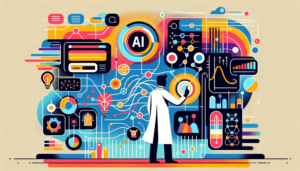Transformation
Leveraging advanced technology like generative AI through digital transformation (not digital enhancement) is how to get the biggest returns in scientific R&D.
Read MoreThere is much more to digital transformation than technology, and a holistic strategy is crucial for the journey.
Read MoreIn the rapidly-evolving landscape of drug discovery and development, traditional approaches to R&D in biopharma are no longer sufficient. Artificial intelligence (AI) continues to be a game-changer.
Read MoreLeveraging large language models (LLMs) in materials science and chemical R&D isn’t just a speculative venture for some AI future. There are two primary use cases that are ready for adoption in research labs today.
Read MoreR&D leaders and scientists need a working understanding of key AI concepts so they can more effectively develop future-forward data strategies and lead the charge towards groundbreaking discoveries.
Read MoreScattered and siloed data is one of the top challenges slowing down scientific discovery and innovation today. What every R&D organization needs is a data fabric as part of their technology solution set.
Read MoreBy Mike Heiber, Ph.D., Materials Informatics Manager Enthought, Materials Science Solutions The American Chemical Society (ACS) is a premier scientific organization with members all over the world from both academia and industry. Some of my team and I recently returned from their primary annual convening, the ACS 2023 Fall Meeting, held in San Francisco. I…
Read MoreThere’s a long history of scientists who built new tools to enable their discoveries. Tycho Brahe built a quadrant that allowed him to observe the path and distance of a comet as it crossed the solar system, helping to prove the heliocentric model of the way the stars and planets move. Galileo Galilei built his…
Read MoreWith the increasing importance of AI and machine learning in science and engineering, it is critical that the leadership of R&D and IT groups at innovative companies are aligned. Inappropriate budgeting, policies, or vendor choices can unnecessarily block critical research programs; conversely an “anything goes” approach can squander valuable resources or leave an organization open to novel security threats.
Read MoreGenerative models can be used in many more areas than just language generation, with one particularly promising area: molecule generation for chemical product development.
Read More








